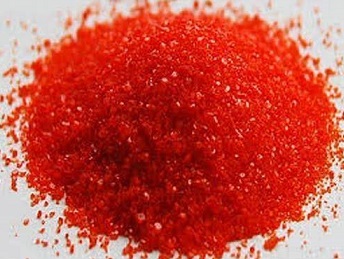Jiangsu Pules Bio-tech Co.,Ltd
Telephone0513-66017706 18551496367
Websitehttps://www.pules.cn/
Shanghai Aladdin Bio-Chem Technology Co.,LTD
Telephone18521735133 18521732826;
Websitehttp://www.aladdin-e.com/
Tianjin Guangfu Technology Development Co. LTD
Telephone022-022-85689490 13132141716
Websitehttp://www.guangfubiaowu.com/
JinJin Le Chemical Co., Ltd
Telephone10106090
Websitehttp://www.jinjinlechem.com
Langfang Ganyao Technology Co., LTD
Telephone0316-2617888 17301291189
Websitehttp://www.pc-chem.com/
J & K SCIENTIFIC LTD.
Telephone010-82848833 400-666-7788
Websitehttp://www.jkchemical.com
Meryer (Shanghai) Chemical Technology Co., Ltd.
Telephone021-61259108 18621169097
Websitehttps://www.meryer.com/cn/index/
3B Pharmachem (Wuhan) International Co.,Ltd.
Telephone821-50328103-801 18930552037
Websitehttps://www.chemicalbook.com/ShowSupplierProductsList13285/0.htm
Alfa Aesar
Telephone400-6106006
Websitehttp://chemicals.thermofisher.cn
Beijing dtftchem Technology Co., Ltd.
Telephone010-60275820 13031183356
Websitehttp://www.dtfchem.com
BeiJing Hwrk Chemicals Limted
Telephone0757-86329057 18501085097
Websitehttp://www.hwrkchemical.com
Energy Chemical
Telephone021-021-58432009 400-005-6266
Websitehttp://www.energy-chemical.com
Beijing Ouhe Technology Co., Ltd
Telephone010-82967028 13552068683
Websitehttp://www.ouhechem.com/
JinYan Chemicals(ShangHai) Co.,Ltd.
Telephone13817811078
Websitehttp://www.jingyan-chemical.com/
Jia Xing Isenchem Co.,Ltd
Telephone0573-85285100 18627885956
Websitehttps://www.chemicalbook.com/ShowSupplierProductsList14265/0.htm
Accela ChemBio Co.,Ltd.
Telephone021-50795510 4000665055
Websitehttp://www.shao-yuan.com/
Shanghai Hanhong Scientific Co.,Ltd.
Telephone021-54306202 13764082696;
Websitehttps://www.hanhongsci.com
Chemsky (shanghai) International Co.,Ltd
Telephone021-50135380
Websitehttp://www.shchemsky.com

